When you give only after you're asked, you've waited too long.
– John Mason
First, learn to bag
Place a towel roll under the scapulae to align oral, pharyngeal, and tracheal axes:
-

- Karsli C. Can J Anesth. 2015.
Use airway adjuncts such as the oropharyngeal airway or a nasal trumpet.
Use the two-hand ventilation technique whenever possible:
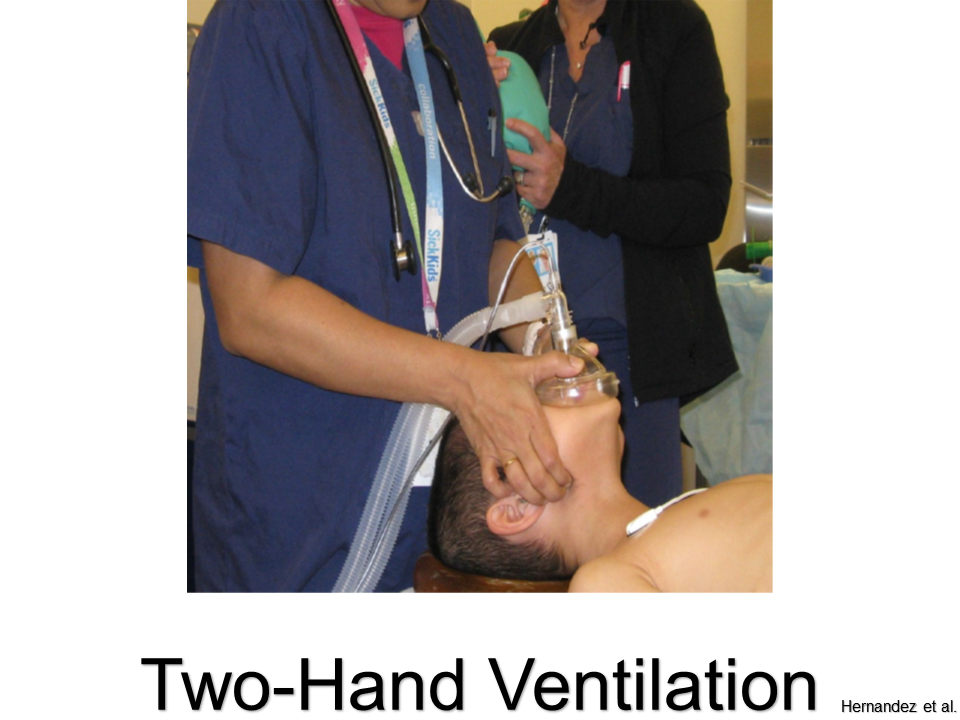
(See Adventures in RSI for more)
Supraglottic Airways:
for difficult bag-valve-mask ventilation or a difficult airway
(details in audio)
LMA Classic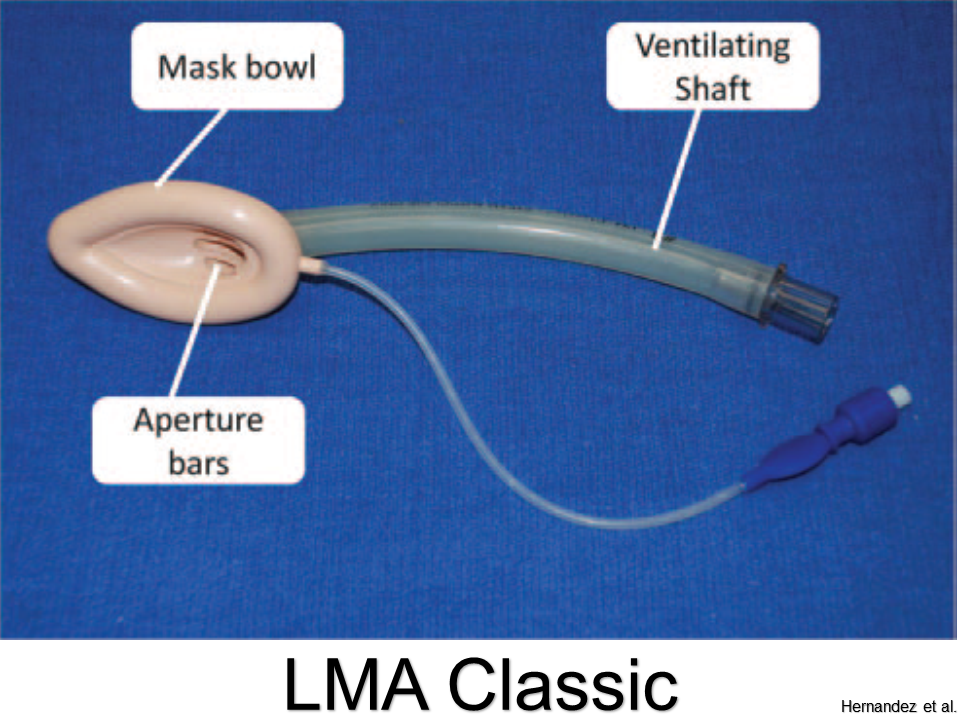
Pros: Best studied; sizes for all ages
Cons: Cannot intubate through aperture
LMA Supreme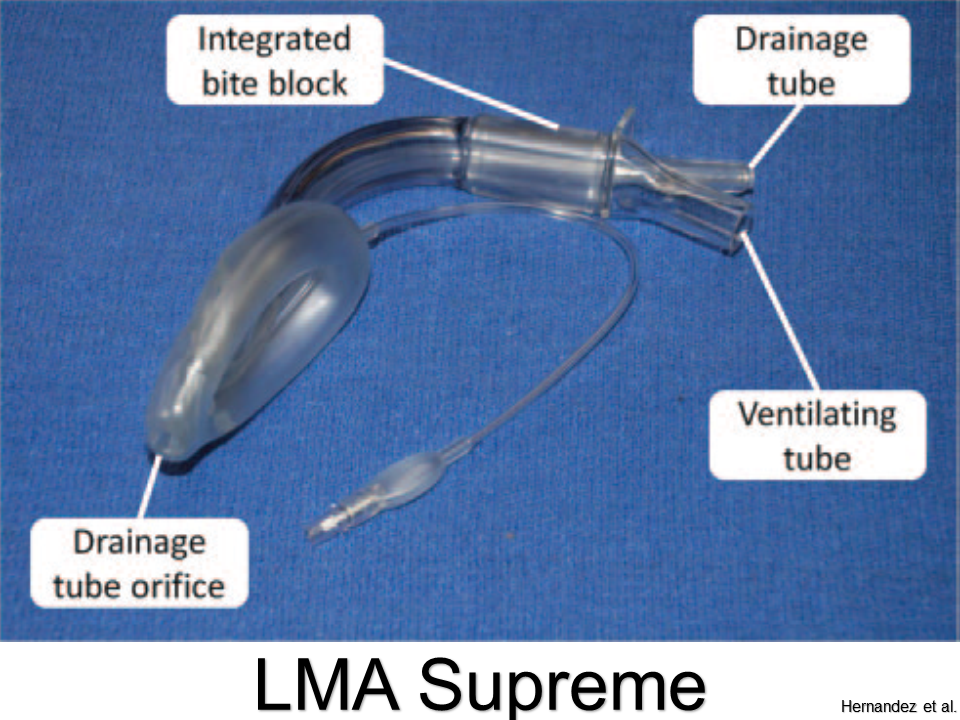
Pros: Better ergonomics with updated design; bite bloc; port for decompression
Cons: Cannot pass appropriate-sized ETT through tube
King Laryngeal Tube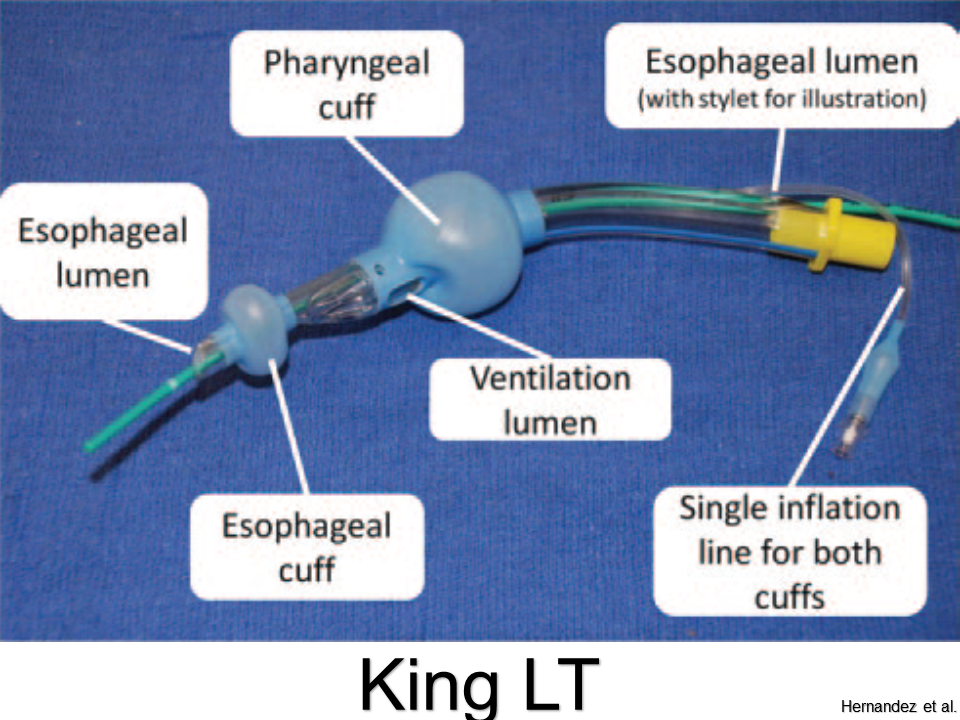
Pros: Little training needed; high success rate; single inflation port
Cons: Flexion of tube can impede ventilation or cause leaks; only sized down to 12 kg (not for infants and most toddlers)
Air-Q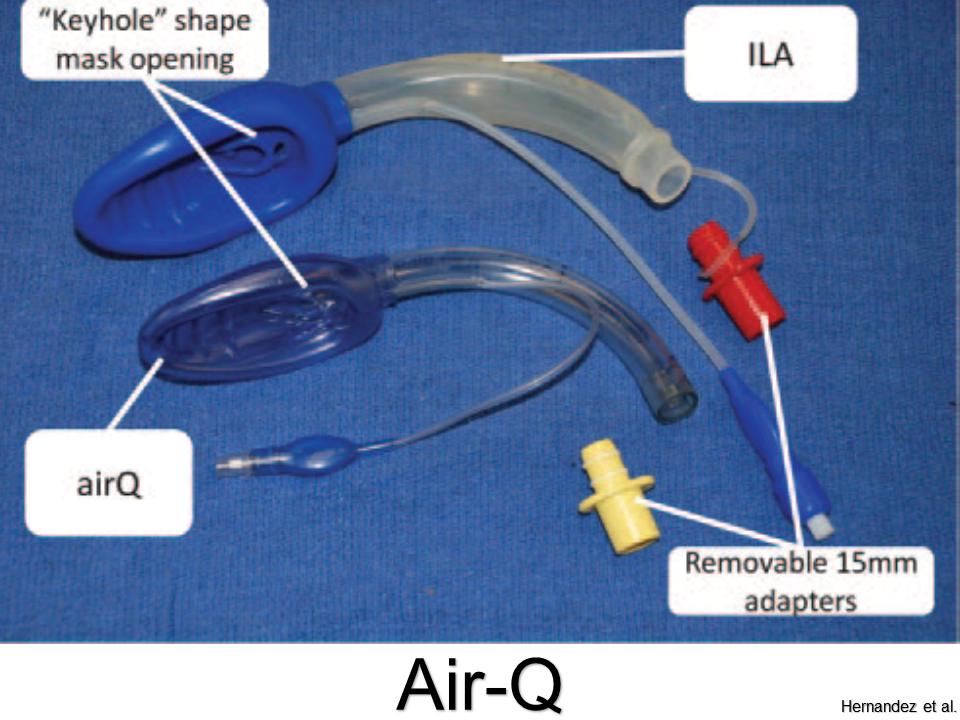
Pros: Easy to place; can intubate through aperture
Cons: Not for neonates less than 4 kg
iGel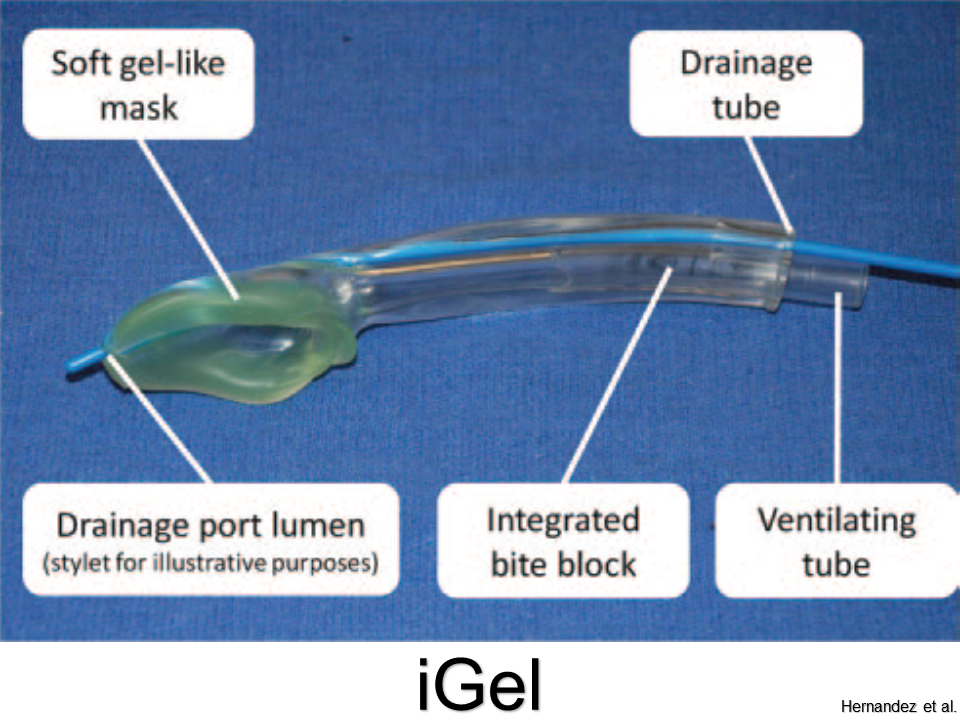
Pros: Molds more accurately to supraglottis; no need to inflate; good seal pressures
Cons: Cannot intubate through (without fiberoscopy)
Summary
• If you can bag the patient, you're winning.
• If you have difficulty bagging, or anticipate or encounter a difficult airway, then don't forget your friend the supraglottic airway (SGA).
• Ego is the enemy of safety: SGAs are simple, fast, and reliable.
• Just do it.
References
Ahn EJ et al. Comparative Efficacy of the Air-Q Intubating Laryngeal Airway during General Anesthesia in Pediatric Patients: A Systematic Review and Meta-Analysis. Biomed Res Int. 2016;2016:6406391.
Black AE, Flynn PE, Smith HL, Thomas ML, Wilkinson KA; Association of Pediatric Anaesthetists of Great Britain and Ireland. Development of a guideline for the management of the unanticipated difficult airway in pediatric practice. Paediatr Anaesth. 2015 Apr;25(4):346-62.
Byars DV et al. Comparison of direct laryngoscopy to Pediatric King LT-D in simulated airways. Pediatr Emerg Care. 2012 Aug;28(8):750-2.
Carlson JN, Mayrose J, Wang HE. How much force is required to dislodge an alternate airway? Prehosp Emerg Care. 2010 Jan-Mar;14(1):31-5.
Diggs LA, Yusuf JE, De Leo G. An update on out-of-hospital airway management practices in the United States. Resuscitation. 2014 Jul;85(7):885-92.
Ehrlich PF et al. Endotracheal intubations in rural pediatric trauma patients. J Pediatr Surg. 2004 Sep;39(9):1376-80.
Hernandez MR, Klock PA Jr, Ovassapian A. Evolution of the extraglottic airway: a review of its history, applications, and practical tips for success. Anesth Analg. 2012 Feb;114(2):349-68.
Huang AS, Hajduk J, Jagannathan N. Advances in supraglottic airway devices for the management of difficult airways in children. Expert Rev Med Devices. 2016;13(2):157-69.
Jagannathan N, Wong DT. Successful tracheal intubation through an intubating laryngeal airway in pediatric patients with airway hemorrhage. J Emerg Med. 2011 Oct;41(4):369-73.
Jagannathan N et al. Elective use of supraglottic airway devices for primary airway management in children with difficult airways. Br J Anaesth. 2014 Apr;112(4):742-8.
Jagannathan N, Ramsey MA, White MC, Sohn L. An update on newer pediatric supraglottic airways with recommendations for clinical use. Paediatr Anaesth. 2015 Apr;25(4):334-45.
Karsli C. Managing the challenging pediatric airway: Continuing Professional Development. Can J Anaesth. 2015 Sep;62(9):1000-16.
Luce V et al. Supraglottic Airway Devices vs Tracheal Intubation in Children: A Quantitative Meta-Analysis of Respiratory Complications. Paediatr Anaesth 24 (10), 1088-1098.
Nicholson A et al. Supraglottic airway devices versus tracheal intubation for airway management during general anaesthesia in obese patients. Cochrane Database Syst Rev. 2013 Sep 9;(9):CD010105.
Ostermayer DG, Gausche-Hill M. Supraglottic airways: the history and current state of prehospital airway adjuncts. Prehosp Emerg Care. 2014 Jan-Mar;18(1):106-15.
Rosenberg MB, Phero JC, Becker DE. Essentials of airway management, oxygenation, and ventilation: part 2: advanced airway devices: supraglottic airways. Anesth Prog. 2014 Fall;61(3):113-8.
Schmölzer GM, Agarwal M, Kamlin CO, Davis PG. Supraglottic airway devices during neonatal resuscitation: an historical perspective, systematic review and meta-analysis of available clinical trials. Resuscitation. 2013 Jun;84(6):722-30.
Sinha R, Chandralekha, Ray BR. Evaluation of air-Q™ intubating laryngeal airway as a conduit for tracheal intubation in infants--a pilot study. Paediatr Anaesth. 2012 Feb;22(2):156-60.
Timmermann A. Supraglottic airways in difficult airway management: successes, failures, use and misuse. Anaesthesia. 2011 Dec;66 Suppl 2:45-56.
Timmermann A, Bergner UA, Russo SG. Laryngeal mask airway indications: new frontiers for second-generation supraglottic airways. Curr Opin Anaesthesiol. 2015 Dec;28(6):717-26.

Supraglottic Airway on WikEM
This post and podcast are dedicated to Tim Leeuwenburg, MBBS FRACGP FACRRM DRANZCOG DipANAES and Rich Levitan, MD, FACEP for keeping our minds and our patients' airways -- open. You make us better doctors. Thank you.
Powered by #FOAMed — Tim Horeczko, MD, MSCR, FACEP, FAAP
Pediatric; Emergency Medicine; Pediatric Emergency Medicine; Podcast; Pediatric Podcast; Emergency Medicine Podcast; Horeczko; Harbor-UCLA; Presentation Skills; #FOAMed #FOAMped #MedEd







